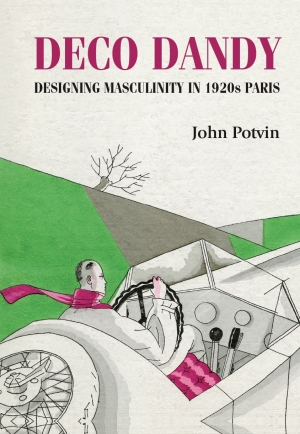Deco Dandy productively contests the supposedly exclusive feminine aspect of the style moderne (art deco). It explores how alternative, parallel and overlapping experiences and expressions of decorative modernism, nationalism, gender and sexuality in the heady years surrounding World War I converge in the protean figure of the deco dandy. As such, the book significantly departs from and corrects the assumptions and biases that have dominated scholarship on and popular perceptions of art deco. It outlines how designed products and representations of and for the dandy both existed within and outside of normative expectations of gender and sexuality complicating men’s relationship to consumer culture more broadly and the moderne more specifically. Important, essential and productive moments in the history of the cultural life of Paris presented in the book are instructive of the changing role performed by consumerism, masculinity, design history and national identity. We speak of representations of gender and sexuality but part of this spectrum of representations is achieved through various design industries. It is here that I seek to contribute to our current understanding of the affect of representation and its collision with gender and sexuality which formed the very blueprint of the moderne and its design-ations of masculinity and the male body. In short, the book asks how did various forms of design and visual and material practices help establish a choreography for the deco dandy’s performances? What, then, do we make of the much-neglected design culture of the male body from the period as well as the feminizing influence of art deco on this culture? Endemic to the deco dandy’s allure and success, I suggest, are two key theoretical concepts: the ensemble and Einfühlung (feeling into). Together, the force of these two concepts facilitated, empowered and reinforced the potentialities of the deco dandy’s lifestyle modernism. As the first style that no longer addressed an artistic elite, but a consumer base, the moderne insinuated itself into an impressive array of media including expositions and art salons, architecture, art and design magazines and advertisements, film screens and dance stages, etiquette tracts and essays, art and design criticism and fashion advice manuals all of which form the basis of analysis for the book. Using design history as a centripetal force and focus, I mobilize various media and fields rarely written about together to engender a genuinely interdisciplinary study which includes: dance, cinema, photography, painting, criticism, fashion, design, graphic design, expositions and interiors.
notice
Deco Dandy by Dr. John Potvin
Designing Masculinity in 1920s Paris
Book by Dr. John Potvin
Deco Dandy: Designing masculinity in 1920s Paris, Manchester University Press, 2020. https://manchesteruniversitypress.co.uk/9781526134790/



